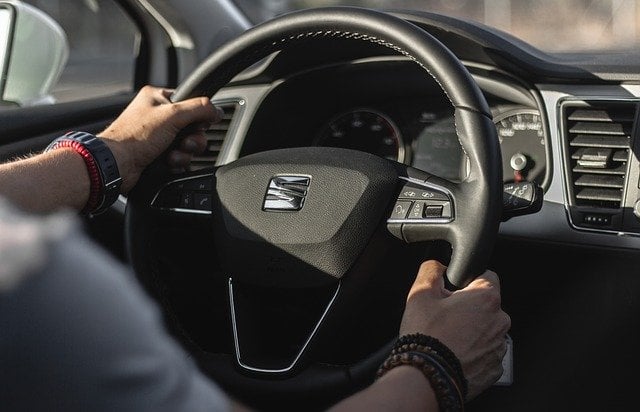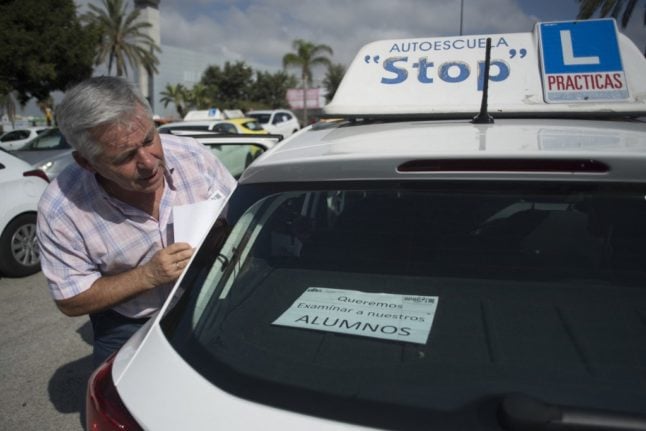Drivers from the EU and EEA
Those with licences from the EU and the EEA are allowed to drive in Spain with their current licences, as long as they have not expired. If your licence doesn’t expire in less than 15 years, you can carry on using your EU licence, but are also free to exchange it any time you want. According to the DGT, this process is voluntary.
According to Spain’s DGT, if it expires in 15 years or more, or doesn’t have an expiry date on it, you should exchange it for a Spanish one. Whenever your licence does expire, you should also exchange it for a Spanish one.
When you want to exchange your licence for a Spanish one or if it expires, you can do so through the DGT in a process called renovación del permiso comunitario.
You must, however, register with their Provincial Traffic Headquarters or local DGT office within your first six months of residing in Spain.
Once you have registered, you will be obliged to take a medical test in order to prove that you are fit to drive. You can get this done at one of the authorised centres (Centro de Reconocimiento de Conductores Autorizado).
If you do want to exchange your licence, you will need the following documents to present at your local DGT office.
- An application form
- An ID card or passport
- Proof of residence in Spain
- A valid driving license
- Two recent photographs
- A declaration that you haven’t been banned or suspended from driving
- A declaration that you don’t hold another driver’s license from another country
Those with UK driving licences
The conditions have changed for British licence holders driving in Spain, now that the UK has officially left the EU and the Transition Period ended on 30 December, 2020.
There are currently ongoing negotiations between Spain and the UK. The British government website states that it has offered EU driving licence holders the possibility of continuing to drive in the UK without the need to exchange their licences for British ones.
“You can drive in Great Britain until you’re 70. If you’re 67 or over when you become resident, you can drive for 3 years. After this time you must exchange your licence. You do not have to retake your test,” reads the British government website.
Whether this will be reciprocal with Spain will likely be decided in the coming weeks and months.
The latest from the British Embassy in Madrid is: “If you live in Spain and have a valid UK driving licence, you will be able to continue using this to drive in Spain until June 30th 2021.

Citizens of Andorra, Switzerland, Monaco, Japan and South Korea
With driving licences issued in these countries, tourists can drive in Spain for 90 days. If you’ve moved to Spain, you can drive up for to 6 months after obtaining residency (also with the international driving permit).
After that period, licence holders from these countries have to exchange their licences for Spanish ones and can’t drive until the process is completed.
The licence exchange can’t be completed if the original licence was obtained after Spain signed an agreement with said country (check with your local consulate) and if it was obtained once the driver was already a legal resident in Spain (only in Korea’s case is it allowed to have been obtained the licence after being a legal resident in Spain).
The documents required for the licence exchange are:
- An application form
- A valid national identity card or passport
- A residence permit and valid residence card
- A medical fitness report from a recognised medical center (such as the Authorised Drivers’ Check Centre (Centro de Reconocimiento de Conductores Autorizado)
- A current valid driving license
- Two recent ID-sized photographs
- A declaration in writing that you have not been banned or suspended from driving
- A declaration in writing that you do not hold another driver’s license of the same class issued by another EU country
- An official translation of your driving permit by a consulate or embassy for South Koreans
- An official translation of the driving permit for those from Japan
In terms of the requirement for international driving permits, the DGT recommends that all licence holders from countries which do not have an exchange agreement with Spain should get an IDP. It is unclear whether this group would be required to get one (check with your consulate).
Driving licence holders from non-EEA countries Spain has a bilateral exchange agreement with
Drivers from Algeria, Argentina, Brazil, Bolivia, Chile, Colombia, Dominical Republic, Ecuador, Guatemala, Macedonia, Morocco, Nicaragua, Peru, Panama, Paraguay, Philippines, Serbia, Turkey, Tunisia, Ukraine, Uruguay, and Venezuela can exchange their licences for Spanish ones within their first six months of residency in Spain.
They will need all the same documents for those from Andorra, Switzerland, Japan and South Korea, apart from the translations as necessary for Japan and South Korea.
According to Spain’s Directorate General of Traffic (DGT), drivers with licences from these countries do not have to take out international driving permits to start driving in Spain either.
Citizens of other non-EEA countries such as the US, Canada, Australia and New Zealand
Those with a driving licence from outside of the EU who are not nationals of the countries with special agreements with Spain (listed just above) are allowed to drive in Spain for a maximum of six months before they need to get a Spanish licence. The six month grace period starts from the time they register for residency.
If their foreign driving license is not in Spanish they must however get an official translation of it or apply for an International Driving Permit (IDP) before they start driving in Spain.
This includes those with driving licences from English-speaking countries such US, Canada, Australia and New Zealand.
So if you are staying in Spain long-term and become a resident here, you will have to resit your driving test in Spain (theory and practical), as Spain doesn’t have an exchange agreement with most non-EEA countries.
Non-EEA drivers who are spending sporadic periods of time in Spain should know that the IDP is only valid for a period of 12 months, but your current driving license will need to have at least 6 months of validity remaining. After this time however, it can be renewed.
To get the IDP you need the following documents:
- Signed copies of the front and back of your current driving license.
- Two passport-sized photos (See application form for requirements)
- A completed IDP application form
- To pay your fee

Taking a Spanish driving test
If you’ve been driving in Spain for a while, then you’re probably used to the road rules and differences of Spanish driving, but if you haven’t, then you will probably be expected to take a few lessons before re-sitting your exam.
You are able to sit your theoretical driving test in English, but the practical part of the test will be conducted in Spanish (although knowing just the specific driving vocabulary should be enough). Several driving schools can teach you both in English and Spanish to help you prepare and get to know the Spanish terms and vocabulary that your examiner might use.
READ ALSO:
- Driving in Spain: Can I take my practical exam in English?
- Spanish driving licence: the essential language to pass your practical test
- Driving in Spain: the 10 questions everyone gets wrong in their theory test
Can I still drive in Spain if I’m a tourist?
Yes, but whether you need to take out an international driving permit before you hire a car in Spain will depend on the criteria listed above.
In theory, you could be prevented from renting a vehicle if you don’t have an IDP when Spanish law states you should have, but in practice plenty of car hire companies will still allow you to hire a car. If you’re stopped by police and you don’t have an IDP when you should, they could fine you €200.




 Please whitelist us to continue reading.
Please whitelist us to continue reading.
Member comments